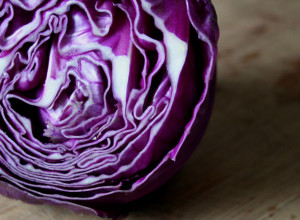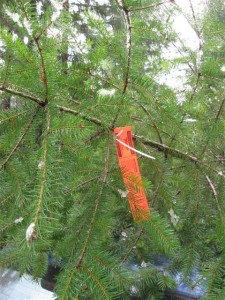Big news: We’ve taken the first steps to refinancing our home! We’ve locked the interest rate at 4.375% for 30 years. The appraisal is scheduled for this Friday. This will mean a great deal more financial security and freedom for us, both in the short and long run.
Quite honestly, when we “bought” (or really financed) our dream house over two years ago, we were stretching our financial limits. We had outgrown our shoebox of a starter house, and we wanted and needed a house where we could truly raise a family. We fell in love with our house, and it met virtually every criteria on our want/need list…not that we don’t have a home wish list though. Buying our house was also stretch because I was pregnant with Girly, and knew that during my unpaid maternity leave we would be paying over 60% of our income to our home. Typically, it’s not advisable to spend so much of your household budget on housing, but in our situation we felt like we needed to make the initial sacrifice.
So, it turned out that we needed to buy Private Mortgage Insurance, PMI, in order to make the initial house purchase possible. We weren’t too happy about it, but we felt like the initial sacrifice would be worth the gain. Conveniently, we were able to pay it off by the time the interest rates hit rock bottom.
On top of the new interest rate, the real reason we are excited about refinancing is our lower payment plan. We’ve been paying $2,455 a mortgage (plus PMI!), and soon we’ll be paying $1,712. That equates to a monthly savings of $743, and $8,917 annually! That doesn’t necessarily mean that won’t work to pay off our mortgage earlier, but initially we’ll need to make some decisions about how to save/invest the cash.
Note that we bought before the market dropped, but also managed to net $70k in less than three years’ investment in our starter house. I’ll be curious about what the appraisal reports, but there’s no doubt that current value is less than the sale price.
Have you refinanced lately?
~*~*~*~*~*~
Sustainable Family Finances
The story of a family creating an abundant and sustainable life.
Fridge Savings
I was quite proud of myself this weekend…I emptied our entire fridge to clean it out, and reconfigured our layout! Hopefully it will help us find and use our food more efficiently. I can’t claim that there wasn’t any wasted food thrown out, but it was less than usual. I am trying to reduce our food waste footprint.
On the energy savings end, I have good news to report too. Since buying our new fridge, our electricity bill is down an average of 2 kwh a day. Compared to last November, we saved 95 kwh for the month! Our November bill was $40.66. It only amounts to an average savings of $7.63 per month so far, but that almost a $100 per year.
In case you’ve been putting off upgrading your appliances, the Energy Star program rebates expire on December 31st. You can save up to $1500, so it’s worth considering.
Has your family saved through the Energy Star program?
~*~*~*~*~*~
Sustainable Family Finances
The story of a family creating an abundant and sustainable life.
Oh Christmas Tree
As a teenager I started to question cutting down a tree for decoration, but I loved the tradition too much to consider boycotting it. The holidays we spent in California with family around a plastic tree didn’t feel quite right. There’s nothing like the smell of a fresh cut tree.
I practically grew up in the woods, so driving a little further into the mountains to cut one down was a simple family adventure. Now our family continues the tradition of buying a $5 permit from the National Forest Service/Bureau of Land Management to cut a tree for the festive season. It’s beats the price of any lot in the city or tree farm in the suburbs!
I’ve been happy to read about how even The Nature Conservancy is advocating for cutting down trees to increase carbon storage and reduce your carbon footprint, at least compared to a PVC tree.
We also do our best to demonstrate good forest practices, by selecting a tree strategically so that others will be able grow bigger without competition. This year’s tree was growing on a steep embankment and already had a crooked stump from trying to grow straight on a curved slope. I consider our tradition to be almost carbon neutral, or at least not entirely harmful. Plus, it allows us to live temporarily with nature during a time when we’re not out camping or even hiking much, and that’s precious.
And, yes, our first year of getting what I consider to be a “real” Christmas tree from the woods, Hubby was a bit taken aback because they don’t look anything like a farmed tree. Personally, I prefer the look of them, they have an airy feel and you can see ornaments on the other side of the tree. Plus, you know that herbicides weren’t used to grow a tree from the forest.
If you really want a living tree, here in Portland there’s such a service that delivers a potted tree, picks it up after the holidays to be planted at a regional restoration site. It’ll cost you $100 ($70 without delivery), but at least you’ll know that your tradition will have a positive environmental impact, not a negative or neutral one.
One other tradition to consider is giving the gift of a tree during the holidays, especially in honor of family members who have passed away. One of my favorite organization, Friends of Trees organizes an annual planting to honor gift recipients. This is another to good way to offset any impact from having a fresh cut tree as adornment.
Do you cut down a Christmas tree?
How much does it cost your family?
~*~*~*~*~*~
Sustainable Family Finances
The story of a family creating an abundant and sustainable life.
Ebb and Flow – Weekly Recap
Save the Season
Zulily Shopping
Whole Living
Kiva Kindness
Happy Weekend!
~*~*~*~*~*~
Sustainable Family Finances
The story of a family creating an abundant and sustainable life.
Kiva Kindness
When we did a gift exchange amongst Hubby’s adult family members it was always hard to know what to buy them. Thankfully now we just do a gift exchange among the cousins so I don’t have to stress about it. My question was always, what do you buy someone who has everything?
In steps Kiva “the change-a-life alternative to holiday shopping.”
A co-worker of mine told me that she buys either Kiva loans or Heifer International for her grown up nieces and nephews.
Another older co-worker of mine is the matriarch of the family, and in a single year their entire family went from buying a thousand dollars worth of gifts to donating together to a charity that the family would choose at Thanksgiving. That would go a long way with Kiva loans, plus each year the amount would grow as the loans are repaid.
I shared about my first experience of green
giving
for Father’s Day, and explained the
concept of micro-lending
. Not quite six months later, 45% of the one loan has been repaid and 20% of the other. With my “credit” I reinvested in a farmer from Tajikistan.
It’s gratifying to think that such a small amount of money could help someone earn prosperity. In reality I’ve been materially successful in my life because I was able to get college loans, buy a house, buy a car…this list goes on. It’s really a great way of paying it forward. Recently, Kiva expanded it’s giving to college students, and you can choose to support true “poor college student”.
Do you have Kiva Karma?
Use this link to lend your first $25 for free!
~*~*~*~*~*~
Sustainable Family Finances
The story of a family creating an abundant and sustainable life.





